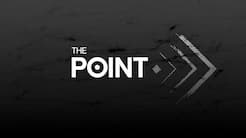Indigenous students have scored noticeably lower results for reading and numeracy than their non-Indigenous peers, figures in the latest reveal.
The gap is so pronounced in every state and territory, except Tasmania, that the mean score for Indigenous students is close to or below the 20th percentile score for non-Indigenous students.
The Australian Government's Productivity Commission said Wednesday that despite considerable effort and investment from the government, little or no progress had been made at the national level in closing gaps for reading and numeracy.
"Meeting the targets for life expectancy, reading and numeracy and employment seems an unlikely prospect at this stage," Peter Harris, chair of the Productivity Commission, said.
Meeting the targets for life expectancy, reading and numeracy and employment seems an unlikely prospect at this stage.
Only 6 percent of non-Indigenous students failed to reach the national minimal standard across reading and writing, compared to at least 18 percent of Indigenous students.
In the Northern Territory, 51 percent of Indigenous students achieved below the national minimum standard in numeracy. Around 61 percent of Indigenous students in the Northern Territory achieved below the national minimum standard in spelling, and grammar and punctuation.
Mr Harris called for a change in approach if Australia was to improve the outcomes for Indigenous Australians.
"If we are to see improvements in outcomes for Aboriginal and Torres Strait Islander Australians we need to move further into the detail, examining which policies and programs work better than others and why," Mr Harris said.
"Our current focus is on setting targets and monitoring outcomes. This must be complemented by evaluation."
While Indigenous students’ scores lag behind their non-Indigenous counterparts, they have improved in some areas.

Source: Australian Government
NAPLAN reading trends
Indigenous students achieved a greater gain than non-Indigenous students from year seven (2013) to year nine (2015).
The NAPLAN report notes no great national difference in gains for Indigenous and non-Indigenous students from year three in 2013 to year five in 2015, and from year five in 2013 to year seven in 2015.
There have been some improvements in year three reading achievement around the nation from 2008 to 2015, including Indigenous students.
But the gap between Indigenous and non-Indigenous students is still noticeable, with 78.7 percent of Indigenous year three students at or above the national minimum standard for reading, compared to 95.6 percent non-Indigenous year three students.
Year five Indigenous students are still performing below non-Indigenous year five students, at 73.6 per cent for Indigenous students compared to 94.5 percent for their non-Indigenous peers.
While there was no overall national improvement in year five reading between 2008 and 2015, year five Indigenous students had still improved, the NAPLAN report says. The same trend was clear for year seven.
At year nine, the national reading achievement has been stable between 2008-2015, including for Indigenous students.
But 78.7 percent of Indigenous year three students are at or above the national minimum standard, compared to 95.6 percent of non-Indigenous students.

Source: Australian Government
NAPLAN numeracy trends
Nationally, Indigenous students’ numeracy gains (63 points) from year five (2013) to year seven (2015) were greater than non-Indigenous students' gains (56 points).
Queensland had the most noticeable numeracy gains of Indigenous students (66 points) over non-Indigenous students (58 points).
At the national level, and including Indigenous students, year five is the only year level that has achieved an improvement in the average numeracy achievement. Yet 78.6 percent year five Indigenous students are at or above the national minimum standard, in contrast with the much-higher rate of 96.1 percent for non-Indigenous students.
Yet 78.6 percent year five Indigenous students are at or above the national minimum standard, in contrast with the much-higher rate of 96.1 percent for non-Indigenous students.

Source: Australian Government
There were no changes in mean numeracy achievement for year three Indigenous or non-Indigenous students between 2008 and 2015, or between 2014 and 2015.
The gap in numeracy achievement for year three is substantial with 78.2 percent of Indigenous students performing at or above the national minimum standard, compared to 95.5 percent of non-Indigenous students.



